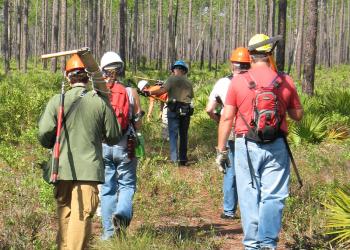Welcome to National Forests in Florida
Welcome to the National Forests in Florida
The Ocala, Osceola and Apalachicola National Forests have something special in store for you.
The National Forests in Florida manage three national forests: Apalachicola, Osceola and Ocala. Combined, these national forest lands span almost 1.2 million acres in north and central Florida. That 1.2 million acres includes about 500,000 acres of wetlands and more than 85,000 acres of designated federal wilderness. More than 1,400 miles of trails and 118 developed recreation sites host more than 1.1 million visitors every year.
Florida’s national forests also house more than 3,700 documented archaeological sites and nearly 55 historic sites. Our employees also care for 136 plant species and 36 animal species that are either threatened or endangered.





